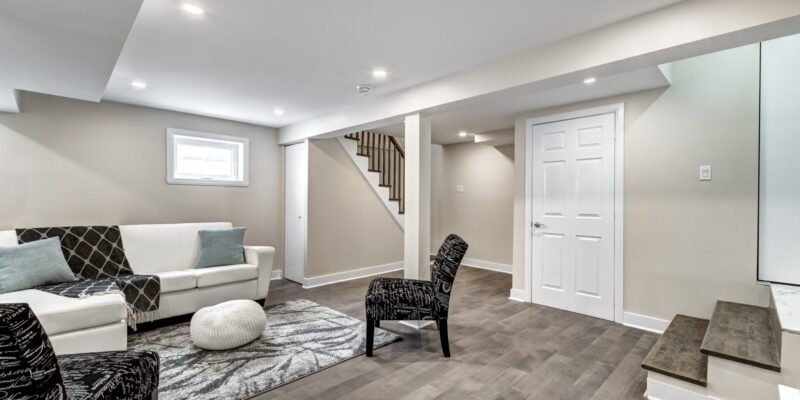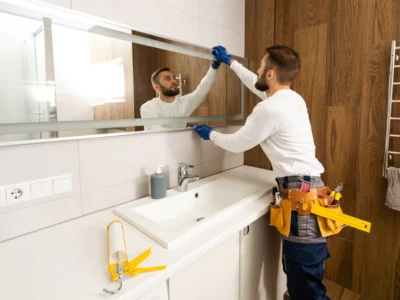Basement renovations can be a great way to add value to your home, but there are some mistakes that should be avoided. Choosing the right contractor for the job is essential, as they will have the experience and knowledge to ensure that the project is completed safely and correctly.
Safety should always be a priority when doing any type of renovation, so it’s important to plan ahead and make sure all necessary safety precautions are taken. Proper planning is also necessary in order to achieve desired results.
It’s important to plan for floods, storms, and other seasonal calamities in order to avoid damage. When selecting resources for the project, it’s important to choose carefully; wood may not be suitable in areas prone to flooding.
By avoiding these common basement renovation mistakes, you can ensure that your basement renovation project is successful and adds value to your home.
Trying DIY
Do-it-yourself (DIY) projects can be a great way to save money and add value to your home. However, it is important to take caution when attempting DIY renovations as some tasks require professional help in order to achieve the desired outcome.
For example, power-washing and painting are typically safe DIY projects, but caution should be taken when stripping or removing paint due to potentially hazardous substances.
Replacing faucets in older homes can also be difficult due to different dimensions and may require custom-ordering parts. Electrical and plumbing work should always be left to the professionals due to safety risks.
Planning ahead and avoiding common mistakes is key to successful DIY renovations. It is important to research the project thoroughly before beginning any work and make sure you have all of the necessary tools and materials on hand. Additionally, it is important to have realistic expectations and be aware of your own skill level.
Ignoring Moisture
Ignoring issues with moisture in the home can be a costly mistake. Moisture can cause a variety of problems, such as mold, leaks, and damage to materials. Structural damage and water leaks should be repaired before waterproofing the basement.
Checking for moisture issues is essential before finishing a basement. This includes inspecting foundation walls for cracks that could allow water to enter and cause damage or mould if the waterproofing seal is broken. Additionally, any existing water leaks should be repaired before starting a basement finishing project.
It is important to take the time to properly inspect and repair any moisture issues prior to beginning a basement finishing project. If these steps are not taken, it could result in costly repairs down the road due to water damage or mould growth.
Adding New Elements
When it comes to adding new elements to an older home, it is important to consider the overall aesthetic of the space. Installing reproductions or refinishing existing materials can often look out of place and lack the quality of original materials.
To avoid this, it is recommended to retain some aged look by using historical finishes or objects that aren’t in perfect condition. This will help create a cohesive look between old and new elements.
In addition, when introducing new elements into an older home, it is important to use a similar style and scale as the existing pieces. Breaking apart old and new items so they are not in direct contact with each other can also help create a more harmonious look.
By taking these steps, you can ensure that your newly added elements will blend seamlessly with the existing decor while still providing a modern touch.
Disregarding the Windows
One of the most common mistakes when it comes to windows is disregarding their structure and seals. Windows are an integral part of any home, providing ventilation, natural light, and insulation from the elements.
If these components are not properly maintained, they can lead to a variety of problems such as drafts, water damage, and energy loss. Therefore, it is important to inspect all windows for proper structure and seals on a regular basis. If any issues are found with the windows, they should be repaired or replaced as soon as possible.
When replacing windows in a home, it is also important to consider building code requirements. Depending on the location of the window and its purpose (such as a livable basement), certain sizes may be required by law.
Additionally, if an egress window is needed for safety reasons then this must be taken into account when selecting new windows for installation.
Installing Vinyl Windows
Replacing drafty wooden windows with modern vinyl options is not the best choice for a long-term investment. Vinyl windows have a much shorter lifespan than wood windows, which can last up to 100 years.
Additionally, weatherizing existing wood double-hung windows is often more sustainable than replacing them. This includes caulking and weatherstripping around the window frame and sash, as well as adding storm windows or interior plastic film to reduce air leakage.
Weatherizing your existing wood windows can help you save money on energy bills while preserving the original look of your home.
Being afraid to remove walls
Removing walls in a historical home can be a daunting task for many homeowners. On one hand, it can increase the value of the property and make it more suitable for modern living. On the other hand, reducing square footage, kitchen size, room count or bathroom count could work against you when selling the home in the future.
Basement insulation is another important factor to consider when renovating an older home. Insulation helps keep the basement warm in winter and cool and dry in summer, while also improving air quality and reducing health risks such as mould and mildew.
It is important to use proper insulation techniques to ensure that your basement is properly insulated and protected from moisture damage.
Use the Basement to its Full Potential
When planning for the use of a basement, it is important to consider how the space will be used in the future. This includes thinking about items that may be difficult to access as mobility issues develop.
For example, if you plan on using the basement for laundry, it is important to decide whether you want your laundry room in the basement or on the main floor. Additionally, make sure to leave adequate space for mechanical rooms and proper ventilation.
It is also important to think about items such as laundry, fridges and freezers when planning for long-term use of the basement. These items can take up a lot of space and should be taken into account when designing your layout.
Furthermore, if you plan on using your beautiful basement as an entertainment area or home office, make sure there is enough space for furniture and other necessary items.
Summary
When planning a basement renovation, it is also important to use appropriate materials that are suitable for the environment. Basements can be a great living space for those who work from home, rent out their basement or have large families, so using materials that are durable and long-lasting is essential.
Attempting to do renovations in your house yourself can lead to many mistakes, so it is important to hire the right contractor for the job in order to avoid costly mistakes. With careful planning and consideration of these common mistakes, you can ensure that your basement renovation is a success.










Comments